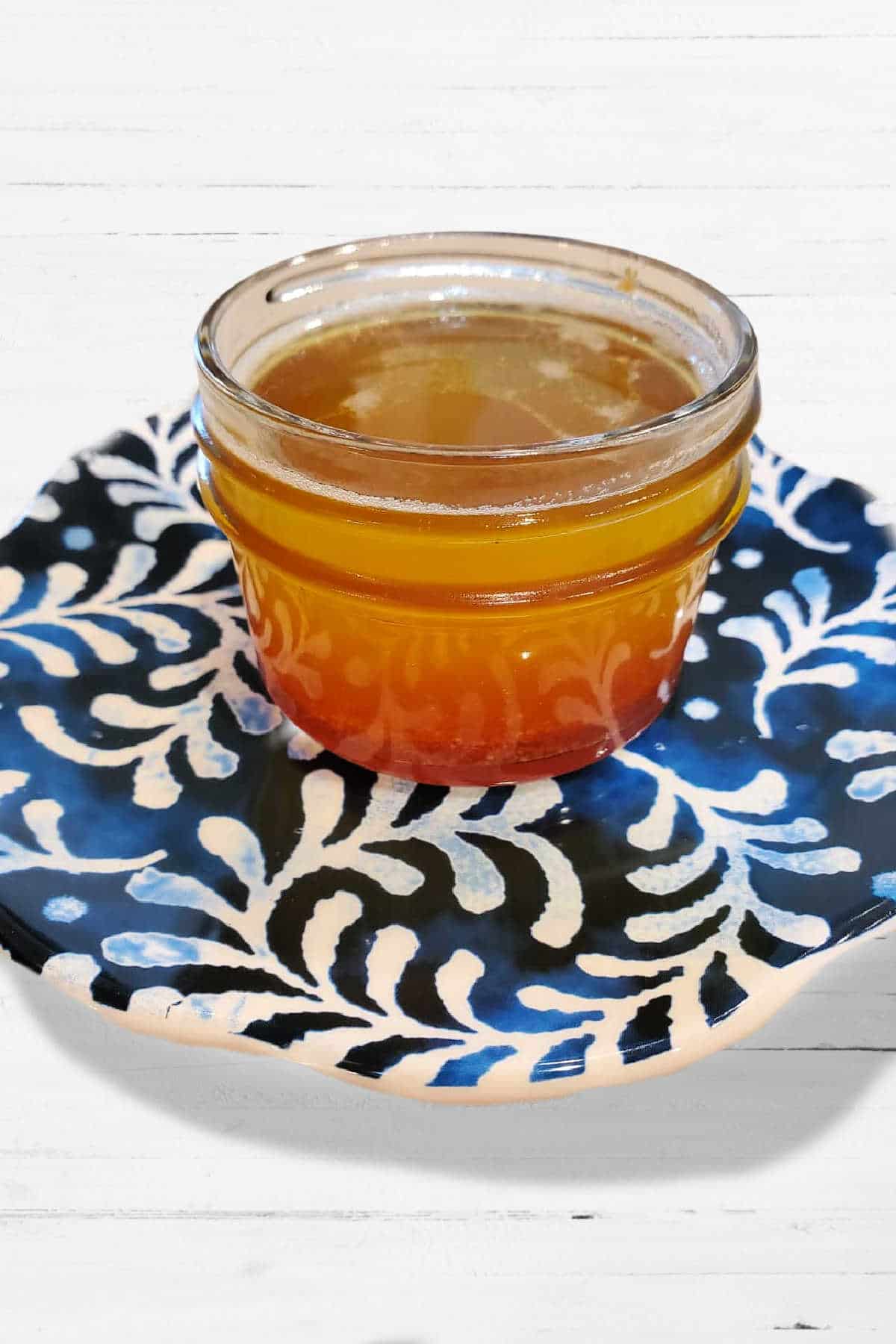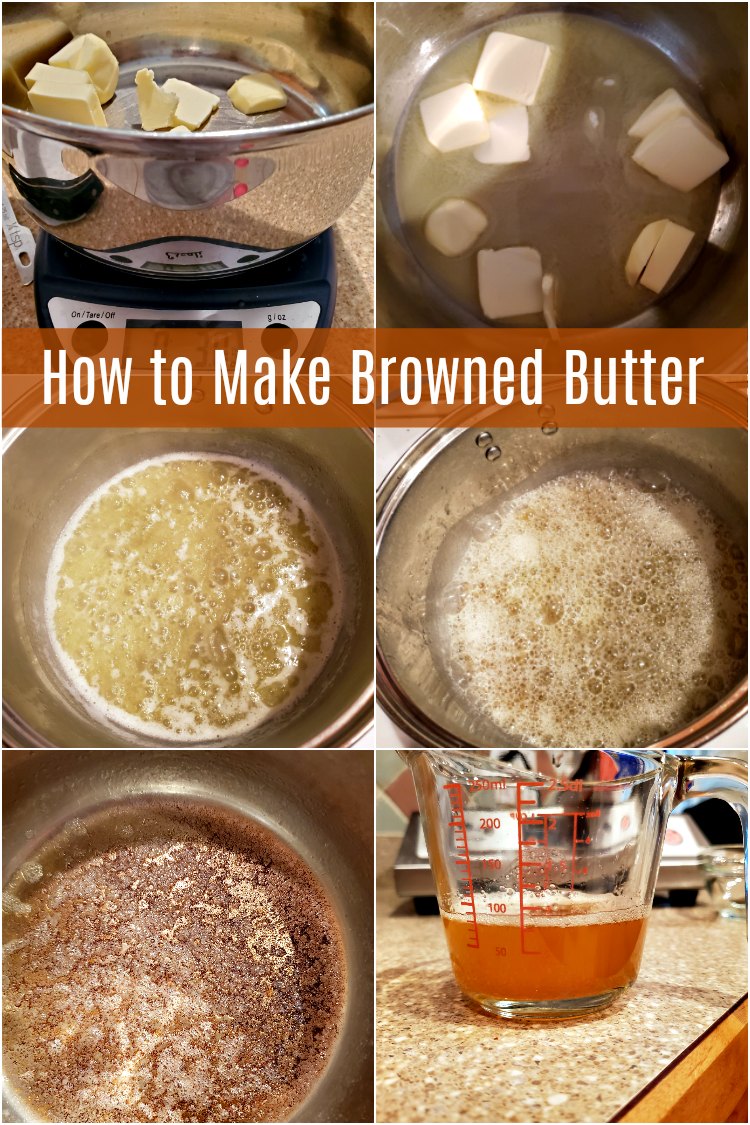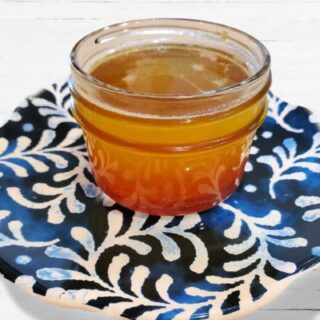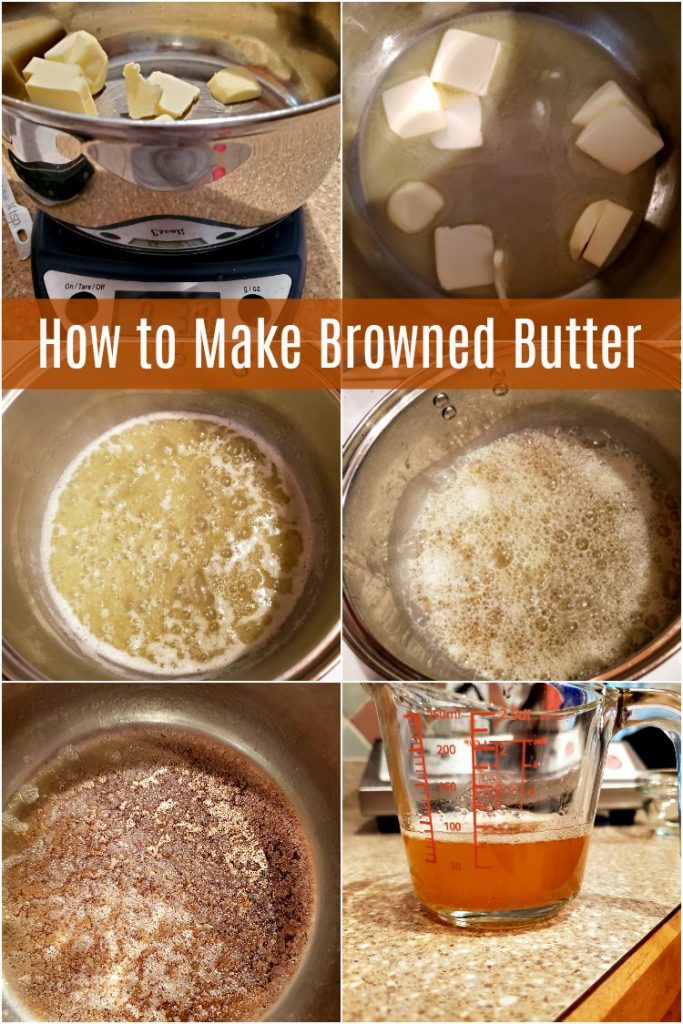Today we’re all about how to brown butter. Browned butter is one of the joys of the kitchen that brings so much flavor to baking and cooking.
Learn how to brown butter, and anything you use it in will just taste better.
And then use some browned butter to make brown butter blueberry buckle or maybe some silky cream of cauliflower soup.

Watch my making the best brown butter web story here.
What’s the Big Deal About Browned Butter?
Some of you may be asking why you’d want to brown butter in the first place.
The answer is to heighten the flavor of the butter, making it both nutty and a bit butterscotchy.
Pastry Chef Online Participates in Affiliate Programs. If you make a purchase through one of my links, I may earn a small commission. For more information click to read my disclosure policy
The French call this nutty goodness beurre noisette, which means hazelnut butter.
This of course has to do with the nutty aroma, but I would also say that the color of the browned milk solids are about the color of hazelnut skins as well: a deep, almost mahogany color.
But not black. Black equals burned.
What Is Brown Butter?
Browned butter is really a misnomer, because we’re not browning the butter itself so much as we are browning the milk solids in the butter and then infusing that caramelized flavor into the remaining butterfat.
That’s a bit of a hair-splitting distinction, but now you know so you can be That Smart One who knows a bunch of awesome stuff about cooking.
Pro Tip
To amp up the flavor of your brown butter, add a heaping teaspoon of dry milk powder per stick of butter. More browned milk solids = more flavor!
How to Brown Butter
Since beurre noisette has a deeper flavor than “regular” or whole butter, it of course will deepen the flavor of everything you put it in.
It works especially well with recipes calling for brown sugar—chocolate chip cookies, oatmeal cookies, blondies, etc–because it reinforces the toffee-ish/butterscotch flavor profile that you get when you mix butter and brown sugar.
On the savory side of things, browned butter works really well with fall flavors: butternut squash and pumpkin come immediately to mind.
There is a reason that pumpkin ravioli in browned butter and sage is such a beloved dish.
Add a bit of beurre noisette to sauces and gravies whenever you want to heighten caramelized flavor.
Brown butter also has a higher smoke point than whole butter since we no longer have to worry about the milk solids burning because they’re gone.
Try pan frying fish in browned butter, tilting the pan and spooning the hot fat over the fish as it cooks.
Take a look at this post on how to make beggar’s linguine. There is no recipe, but you just use up bits of this and that and bind all the ingredients together with brown butter to make a delicious and easy pasta sauce.
How to Substitute Brown Butter for Whole Butter
Keep in mind that, because your butter after cooking is 100% fat and whole butter is only about 80% fat, if you want to substitute browned butter for whole butter in baking without any change in the texture of the finished dish, you’ll have to decrease the amount by 20% and increase the liquid by the same amount.
If a recipe calls for 4 oz (1 stick) of butter, substitute 3.2 oz browned butter (4 oz times 80%) and add an extra .8 oz liquid (4.0-3.2=0.8).
Process

- work over medium heat, swirling the pan often
- once the milk solids sink, it will not take long for them to brown, so keep an eye on it
- once the solids have turned a medium brown, immediately strain the butter into a waiting bowl
This brown butter post is the result of a reader request.
If you have any requests or questions on any baking or cooking techniques, please don’t hesitate to ask.
You can leave a comment on this post and I will usually respond within 24 hours. If your question is more urgent, email me, and I’ll get back to you within about 4 hours (unless I’m sleeping).
Happy to help, so just shoot me an email!
It will help me and other readers so much if you take a moment to rate and leave a review for this recipe.
You can use the stars to rate 1-5 (5 is best), and leave a review in the comments. It helps me make adjustments if any are needed, and comments help others decide whether the recipe is worth making.
Other ways to share include pinning, and/or sharing on your favorite social media platform.
Thank you so much for taking the time!


How to Make Browned Butter
Ingredients
- 1 pound 16 oz or 4 sticks unsalted butter
- 4 heaping teaspoons dry milk powder optional
Instructions
- Place the sticks of butter in a medium sauce pan and melt over medium heat.
- Cut the butter into pieces to help it melt more evenly.
- Once the butter has melted, keep it over the heat.
- Add the milk powder now, if using.
- Swirl the pan occasionally as the butter cooks.
- You will notice it start to sputter and boil after a couple of minutes. This is the water in the butter boiling away. Some foam will collect on top of the butter, too.
- Keep swirling the pan and cooking the butter until you can see deep golden brown bits (milk solids from the butter) on the bottom of the pan. The butter will smell rich and nutty and kind of like toffee.
- Carefully pour the butter through a fine mesh strainer and into a heat proof bowl. You can leave the browned bits in the butter or carefully spoon the browned butter into another container, leaving the browned milk solids behind.
- Cool to room temperature and then store in the freezer for 2 weeks. For longer storage, browned butter freezes very well and will stay fresh for several months.
Did You Make Any Changes?
Video
Notes
Nutrition

Hi, y’all! I hope you’ve enjoyed this post and hopefully also learned a thing or two.
If you like my style, I invite you to sign up for my occasional newsletter, The Inbox Pastry Chef.
Expect updates on new and tasty recipes as well as a bit of behind-the-scenes action. I hope to see you there!
Thank you so much for spending some time here today.
Have a lovely day.
PS Keep an eye out for all the Fundamental Friday posts.



Join in Today!

How does this differ from clarified butter, other than the caramelization, since the solids are strained out? Thank you so much for the excellent information!
Good question, Pam. The only real difference is that, when you clarify butter, you stop the cooking before the solids start to brown, so there’s no nutty flavor. Ghee is similar also, but with ghee, it’s cultured, clarified butter.
Thank you so much for the information and very quick response! I now have another question. The written instructions say to strain the solids out when you pour the butter out of the pan into a bowl. But the web story/video does not show straining the solids and says, “Be sure to get all those little bits you worked so hard to brown!” Is straining the solids optional? If so, what is your advice on when to strain and when not to strain? Thanks in advance for the clarification.
It really depends on the application. If it’s something where the bits would look…odd, strain them out. The flavor will sort of infuse while all of it is sitting anyway, before straining. BUT, there is a lot of flavor in those bits, so where it won’t detract from the look, like in cookies or something, I always leave them. And here’s an extra tip: if you add a little bit of powdered milk to the butter in the pan before browning, you’ll have extra browned bits and a super-charged brown butter flavor!
Let’s say I browned a bunch of butter at once. Now I want to use it in a recipe. I measure out 1 cup of browned butter. Do I still need to add liquid back somewhere else? Or since I have a full cup, I’m good? Thanks
Hey, Melodie. Good question. It’s going to depend on what you use it in. In baked goods, subbing browned butter for whole butter will always make for a more tender product. In a cookie that is dry anyway, this may be a good thing, like for a delightfully crumbly butter cookie. In that case, you wouldn’t need to add additional liquid. In a cake, though, where if it’s too tender, it could literally fall apart, I’d consider subbing 85% of the amount/weight of butter for browned butter and add an additional 15% more of whatever liquid is already called for. That way you will still activate enough gluten to keep your cake from falling apart. I hope that helps. Let me know if you need clarification. Thanks!
That is perfect! I guess I didn’t specify before but his is for a cake, therefore I will add in the lost liquid amount by increased the dairy. Thank you for the prompt reply.
You’re very welcome. Would love to hear how your cake turns out! Thanks again for the excellent question–gave me something to think about, which is always welcome!
For baking, you gave us the formula for the lost liquid (thank you), but when do you put the liquid back in? When creaming the butter and sugar or just add that little amount back in with the called for liquld in the recipe? If it’s when creaming the butter and sugar which liquid do you use, water or milk? Thank you so much for your post!
Hi, Cindie! That’s a really good question. It is dependent upon the recipe and the end goal you have.
So maybe in a cake where I want the same texture but with the added richness of browned butter, I’d add in the lost liquid with the dairy portion. It’s usually dairy, but you can add that liquid back in in any form, really. Water, milk, even coffee. Also dependent upon your recipe and what you’re trying to achieve.
If it’s a recipe where I want not only that flavor but the extra tenderness from extra fat, I may just leave the lost liquid out.
I know that doesn’t really answer your question, but it’s too simple an answer to say always yes or always no. I guess a good rule of thumb would be if you’re using browned butter in place of whole butter strictly for flavor, add the liquid back in either with the fat (like whole but separated butter) or along with the rest of the liquid.
When you want to use browned butter both for flavor and a more tender product, leave the liquid out.
I may add this discussion to the post, because it could help other people. I hope this answer had been helpful to you!
Thank you, Jenni!
I was wondering – does the brown butter turn solid again, and can I use it in cake or cookie recipes like I would regular butter, creaming it with sugar, and then add the dry ingredients? Thanks!
Sandy
Hey, Sandy! Good question. Yes, browned butter does get solid in the fridge. You can use it in place of whole butter in cookie recipes for sure. Your final results will be a bit more fragile since brown butter is 100% fat and whole American butter is only about 80% fat or so with the remainder made up with milk solids and water. The flavor will more than make up for the slight increase in fragility, though. Enjoy!
Forgot to mention: I also really appreciate you giving the ratios for substituting browned butter for regular in baked goods. I didn’t know any of that, and I’m sure it’ll come in handy.
If it’s only a small amount, it probably won’t make too much difference, but when you’re talking about large recipes with 3 and 4 sticks of butter, it definitely comes in handy to have the substitution. =)
Wow, Jenni, thanks for getting to my request so quickly — I feel like I have my own personal culinary instructor!
This was so, so helpful — especially, as Mrs.JennyK said, by being so specific about the timing. I think it points out where I was often going wrong: being too impatient with the heat, and not swirling sufficiently. I’ll try again real soon on something with a pronounced butter flavor and report back on whether my skills have improved.
Thanks again, so very much. You’re a peach.
…Maggie
Yay! I was hoping you’d see this–I’m so glad you found it helpful!
What a great video and tutorial on how to make browned butter correctly. This is a great base to those blondies from another food blogger and I will give this one a swirl! Thanks for patiently teaching us how to do it right, Jenni! Hope your weekend is going great!
I want to brown pounds of butter and always have it on hand; I love what it does to SO many dishes. Nice video Jenni; I think too often the first time trying this people get burned butter; with mine I always seem to have bubbles on top so have to go by scent and when I start to see a bit of brown bubbling up in the center I’m watchful. Very watchful.
My favorite chocolate chip cookies have brown butter and molasses. Wish I had some right now and it’s all your fault! 🙂
Brown butter and molasses, you say? Hmmmm…. =D I am the worst. I am sorry to have fed your addiction. But not really, Donna! 😉
Thank you SO much for showing how long it takes. I get very frustrated watching how-to videos where the person just cuts to the result without giving me an idea of what amount of time to expect. 1 minute? 10 minutes? 20? I’ve tried making browned butter before but I knew I wasn’t getting it quite right. I think I was stopping too soon. Now I know what I’m looking for in the appearance. Awesome!
Yay! Knowledge is power! =)